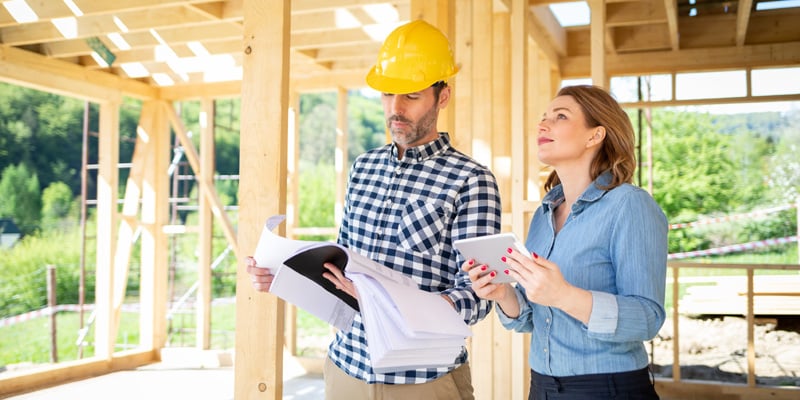
Know a Real Estate Investor’s Role in Infill Construction Loans
Infill construction allows developers and real estate investors to take advantage of underused land in urban locations to create opportunities for new construction. “Infill construction” basically fills gaps and empty spaces to maximize land use efficiency and promote revitalization where infrastructure like roads, utilities, and public transportation already exists.
There are a lot of different uses for this type of property construction. Infill can include single-family homes, townhouses, apartment buildings, or mixed-use developments that combine residential and commercial units. The design and scale of infill construction usually conform to the surrounding neighborhood's character and architectural style.
Many communities prefer infill development projects because they provide more walkable neighborhoods and access to public transportation. Some construction can also revitalize older neighborhoods, attracting new residents, businesses, and economic activity to the area.
Like any development, there can also be some challenges with an infill development project, including:
- Resistance from existing residents
- Increased traffic congestion
- Strain on local infrastructure
- Regulations and zoning restrictions
- Conforming to existing design and building patterns
- Site limitations
- Disruptions during construction
Infill development projects, in particular, require careful planning, project management, and collaboration with regulators and the local community to get approval and ultimately succeed.
Benefits of infill construction loans
While infill construction projects are generally more complex and have more layers than other types of real estate investments — like standard fix and flip projects — there are also many benefits for investors, lenders, and the community.
Financing for undeveloped land
Infill construction loans allow developers to secure financing specifically to develop vacant or underutilized land in cities and metropolitan areas. Traditional construction loans can be more difficult to secure for infill projects because of the potential challenges and risks associated with this type of development.
Land utilization
Infill construction loans help support efficient urban land use, which also helps to minimize urban sprawl and preserves undeveloped land on the outskirts of cities and in more rural areas.
Revitalize old neighborhoods
Infill construction loans also help improve older neighborhoods. New development attracts new residents, businesses, and greater economic activity to the area, potentially increasing property values and improving the overall quality of life in the neighborhood.
Meet housing demands
Infill construction loans can help address housing shortages in urban areas, where land for new development is usually limited. By funding new construction, infill loans contribute to increasing the housing supply and potentially making housing more affordable in high-demand areas.
Potential for higher returns on investment
Infill construction projects often have the potential for higher returns on investment (ROI) compared to expansions in less developed areas. The proximity to existing amenities and local infrastructure can lead to higher property values and more rental income for investors.
Lower infrastructure costs
Infill construction projects take advantage of the local infrastructure, which helps reduce the financial costs and logistical challenges associated with building new infrastructure in undeveloped areas.
Applying for an infill construction loan
Whether you’re applying for new construction or to develop additional units on already existing lots or buildings, the process for an infill construction loan differs from regular investment property funding. Here’s why: you’ll need to show the full scope of your project — including things like environmental impact studies — to acquire funding.
Find a lender
Thoroughly research lenders with experience funding infill construction loans, which may include banks, credit unions, financial institutions, and private lenders.
Documentation
Some of the documents you’ll need to apply for an infill construction loan may include:
- Project plans and blueprints
- Construction cost estimates and a detailed budget
- Land and building permits
- Zoning approvals
- Financial statements
- Construction timeline and project schedule
- Feasibility studies
- Environmental impact studies
Loan proposal
Create a comprehensive loan proposal that outlines the proposed scope of your project, your experience as a developer and real estate investor, the projected costs and expected revenues, and your requested loan amount. This is also an opportunity to highlight the benefits and potential returns of your infill development project.
Loan evaluation and underwriting
Your lender evaluates the loan application, as well as the potential risks associated with your project. Lenders generally review your financial history, creditworthiness, and the viability of the proposed development. They may also request a property appraisal and inspection.
Loan approval and closing
If your loan application is approved, you’ll receive a loan commitment that outlines the specific terms and conditions of the loan, including interest rates, repayment schedule, fees, and any specific requirements or conditions attached to the loan. Once you accept the loan commitment, you will proceed to the closing phase.
Disbursement and construction
Most lenders typically disburse funds in stages or "draws" as the construction advances. You will likely have to provide regular updates and documentation to your lender to draw the funds. Be aware that regular inspections of the construction may also be a condition of your infill development loan, depending on the lender and the final terms of your loan.
As with any real estate loan, the specific requirements and terms of infill construction loans vary according to the lender, so it's essential to choose the right lender according to your project’s specs and your overall financial goals.